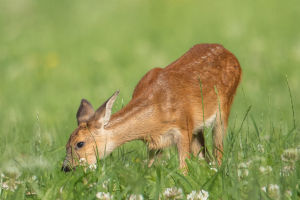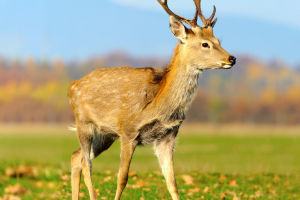In the tranquil and often overlooked waterways of Europe, a magnificent gem glides with elegance and grace, captivating the hearts of those lucky enough to catch a glimpse.
The European kingfisher, with its vibrant plumage and remarkable hunting prowess, stands as a symbol of natural beauty and resilience in the continent's ecosystems.
A Splash of Color
One cannot help but be entranced by the European kingfisher's striking appearance. Adorned in shades of electric blue, orange, and white, it is as if an artist's brush has delicately painted every feather with meticulous care. Its back shimmers with iridescent blue-green hues, while its underparts boast a warm chestnut orange. A sharp black beak, perfectly designed for catching prey, completes its regal visage.
A Life Aquatic
True to its name, the European kingfisher is a master of the waterways. Found near slow-flowing rivers, streams, and lakes, these avian marvels are expert anglers, plunging into the water with astonishing precision to catch their prey. With keen eyesight capable of spotting fish beneath the surface even in low-light conditions, they wait patiently on overhanging branches or other perches, poised for the perfect moment to strike.
A Family Affair
Kingfishers are devoted to their families, with both parents playing essential roles in raising their children. After excavating a tunnel in a riverbank or other suitable location, the female kingfisher lays a clutch of eggs, typically numbering between five and seven. Both parents take turns incubating the eggs and feeding the chicks once they hatch. Despite their diminutive size, European kingfisher parents are fiercely protective, ensuring the survival of their offspring in a challenging world.
Threats and Conservation Efforts
While the European kingfisher's beauty and adaptability are undeniable, it faces numerous threats to its survival. Habitat loss, pollution, and climate change pose significant challenges to these birds and the ecosystems they inhabit. Efforts to preserve and restore wetlands and waterways are crucial for the kingfisher's continued existence, as are measures to mitigate the impacts of pollution and climate change.
Habitat loss, mainly due to human development such as agriculture, urbanization, and infrastructure projects, is one of the primary threats to the European kingfisher. As wetlands and waterways are drained or altered, the kingfisher loses essential hunting grounds and nesting sites. Pollution, including runoff from agricultural fields, industrial waste, and plastic pollution, further degrades the quality of the kingfisher's habitat and contaminates the waterways upon which it depends.
Climate change exacerbates these threats by altering weather patterns and disrupting ecosystems. Rising temperatures can affect the availability of prey species, while more frequent and intense storms can flood nesting sites and erode riverbanks. In the face of these challenges, conservation efforts are underway to protect and restore the habitats upon which the European kingfisher depends
A Beacon of Hope
Despite the challenges it faces, the European kingfisher serves as a beacon of hope for conservationists and nature enthusiasts alike. Its presence in Europe's waterways is a testament to the resilience of nature and the importance of preserving biodiversity. By protecting the habitats upon which the kingfisher depends, we not only safeguard the future of this iconic species but also ensure the health and vitality of entire ecosystems.
A Call to Action
As stewards of the natural world, it is incumbent upon us to take action to protect species like the European kingfisher. Whether through supporting conservation initiatives, advocating for policies that promote habitat preservation, or simply fostering a deeper appreciation for the beauty of nature, each of us has a role to play in ensuring a brighter future for these magnificent birds and the environments they inhabit.
In the tranquil waterways of Europe, the European kingfisher reigns supreme, a symbol of beauty, resilience, and the delicate balance of nature. With its vibrant plumage and remarkable hunting skills, it captures the imagination and inspires awe in all who encounter it. As we strive to protect and preserve the natural world, let us remember the invaluable role that species like the European kingfisher play in enriching our lives and sustaining the ecosystems upon which we all depend.


